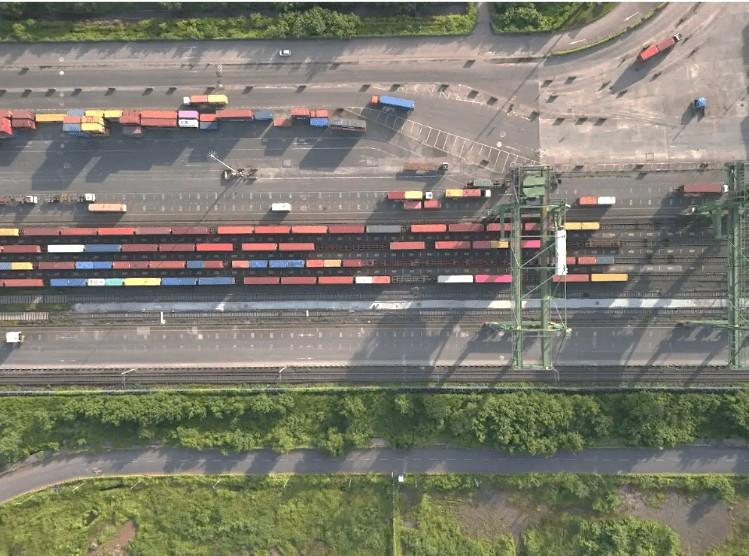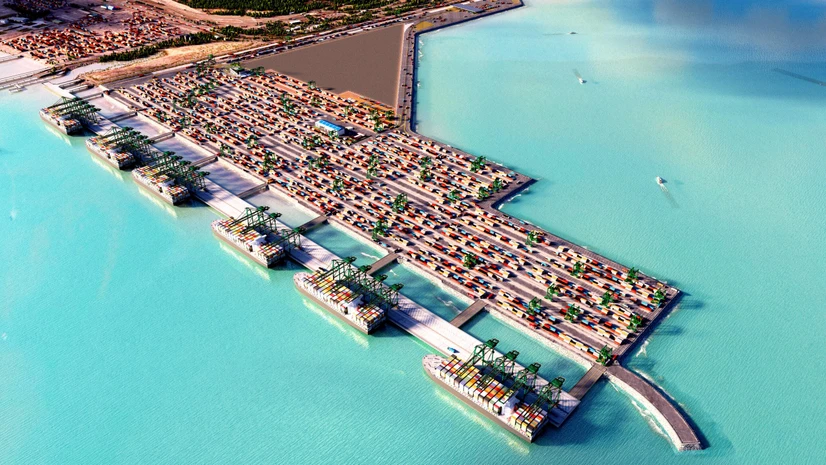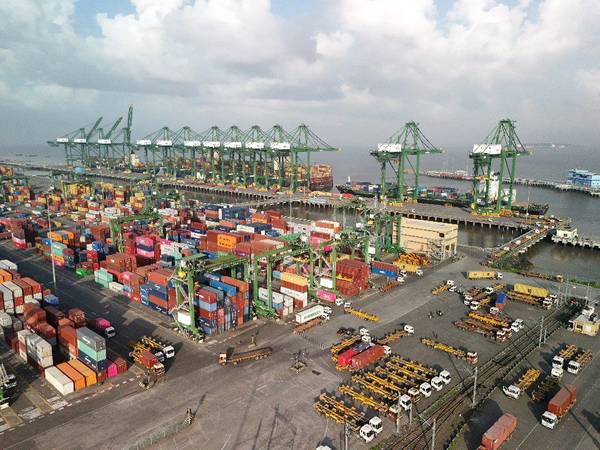India’s economic progress rests in a continuous thread of logistics, and as the freight corridor, the railways hold the key to this movement. Dedicated Freight Corridors (DFCs) are transforming India’s rail network into something more efficient and cost-effective, making the entire railway logistics sector smoother.
PSA India, a leader in port operations and logistics infrastructure, plays an important role in bringing the best possible potential of DFCs and making India competitive in trade.
The Overview of Dedicated Freight Corridors in India
India’s DFC project is one of the most significant infrastructure projects to address the growing demand for efficient rail freight operations. The work aims to build specialized freight-carrying lines independent of passenger transport to be most effective and minimize congestion.
- Eastern Dedicated Freight Corridor (EDFC): At 1,337 km long from Punjab’s Ludhiana to West Bengal’s Dankuni, EDFC is already operational and moves coal and other bulk materials.
- Western Dedicated Freight Corridor (WDFC): It’s 1,506 km long from Uttar Pradesh’s Dadri to Mumbai, and with 93% of work done, WDFC is connected with port terminals such as Mundra, Kandla, and Hazira.
Sophisticated infrastructure in these corridors, such as 25-tonne axle load, 2×25 KV electric traction systems, and double-stack container trains, enable rail freight to move more and with greater capacity.
Significant Impacts of Dedicated Freight Corridors on Indian Railways
1. Freight Efficiency Increased
- Reduced Transit Times: Transit times of DFC-compliant railways have reduced considerably. The EDFC has reduced transit time to move coal, and the WDFC has reduced product transit time from western ports to NCR by half.
- Higher Throughput: DFCs enable the transport of heavier and longer trains, which assist Indian Railways in transporting more goods through fewer trains. The DFCs can handle 300 trains daily, enhancing efficiency if they are run at full capacity with efficient planning.
2. Reduction in Cost
- Cost Reduction in Freight and Logistics: Decreased transit time and streamlined operations have lowered freight costs, directly impacting freight forwarders and businesses. By lowering transit time, DFCs contribute to lowering logistics costs—a target for the National Logistics Policy to reduce it from 13-15% of GDP to below 10%.
- Operational Cost Savings: With more modal shifting of goods from roads to rails, DFC operations save on road infrastructure fuel usage and maintenance, offering a cleaner, lower-cost alternative.
3. Indian Railways’ Revenue Growth
As freight operations within the railways improve efficiency and dependability, Indian Railways also witness unparalleled revenue growth. During the FY 2022–23 interval, Indian Railways has seen a 15% revenue growth, with DFC operations being one of the primary growth drivers. Dedicated freight corridors enable Indian railways to regain market share from road transport, which had dominated the freight market earlier.
The Impact of Dedicated Freight Corridors on India’s Economic Growth and Development
1. GDP Rise with Improved Supply Chain Efficiency
The DFCs also play a massive role in improving India’s supply chain efficiency. The corridors facilitate trade and make India globally competitive by connecting inland industrial centres to ports. With more excellent connectivity, import and export traffic increases, directly impacting India’s GDP growth.
2. Regional Economic Development
DFC corridors have given actual economic benefits to corridor states. Low-performing states like Jharkhand, for example, have had significant welfare gain, and clusters of production along the corridors are more integrated with global value chains. This has helped spur foreign investment and manufacturing growth.
3. Facilitating Export Growth
The DFCs also enable the transportation of goods to and from gateways such as Jawaharlal Nehru Port and Mundra Port. PSA India’s PSA Mumbai terminal, JNPA location, is connected directly with the DFC, further enhancing India’s capacity to handle large international trade volumes. The improved export infrastructure benefits India’s export industries, which help the economy.
4. Environmental Benefits
- Carbon Emission Reduction: Diversion of freight from road to rail significantly reduces carbon emissions, which is very much in line with India’s aspirations. The DFCs are powered by electric traction, which enables cleaner logistics.
- Air Quality Improvement: Less traffic on the roads means less emission of particulate matter, thereby helping improve air quality in urban areas and rural towns.
How PSA India Ensures Dedicated Freight Corridors Success
As a port and integrated logistics industry leader, PSA India is a key driver in optimizing the efficiency of the Dedicated Freight Corridor network. Through its world-class PSA Mumbai and PSA Chennai terminals, PSA India is a key enabler for rail freight movement and port connectivity.
1. Maximum Port and Rail Connectivity
PSA India’s Jawaharlal Nehru Port (JNPA) at Nhava Sheva, where PSA Mumbai terminal is located, is directly connected with the DFC, offering quick intermodal options for freight. With seamless cargo conversion between sea and rail and vice versa, PSA India maximizes the efficiency of railway freight logistics. It helps move goods quicker between ports and hinterland locations. PSA India’s world-class terminal facilities, high quay cranes, and cutting-edge technology enable last-mile logistics and cargo handling. They are a critical link in the global supply chain.
2. Enabling Last-Mile Logistics
Through its CFS at PSA Ameya, located in Mundra Port and Uran, PSA India provides vital last-mile connectivity, deconsolidation, and consolidation of shipments for improved inland handling. PSA India offers temperature-controlled warehousing in the Uran facility and special cargo handling, providing flexibility and reliability for pharma, FMCG, and chemical industries. Such assistance enhances the railway freight infrastructure so that the merchandise is passed on hassle-free from port terminals to its final destinations in India.
3. Multimodal Logistics Integration
As DFCs are a part of multimodal transport networks, PSA India’s linkages of ports to the road and rail enable freight forwarders to access intermodal services. The integration is advantageous, transit time is beneficial, and Indian businesses have an additional competitive edge.
Opportunities for Freight Forwarders Provided by Dedicated Freight Corridors
1. Service Reliability
The DFCs provide secure timetables so freight forwarders can easily schedule. The isolated tracks of the DFC ensure that there is only a 12-minute gap between the trains, thus allowing for uninterrupted, smooth services.
2. Increased Market Coverage
With the increasing expansion of the DFC network and the development of multimodal logistics parks, freight forwarders will have the capacity to enter new emerging markets and develop new innovative logistics products. This progress will be channelled to new market-share expansion and enhancing services.
Conclusion
The Dedicated Freight Corridors are transforming India’s railway logistics into a more effective, economical, and efficient service. PSA India’s role in ensuring that port-to-rail connectivity remains seamless and that the world-class logistics infrastructure is vital to making the DFCs as efficient as possible.
For freight forwarders, the transition offers an opportunity to logistically rationalize, improve market access, and enable India’s economic growth. Along with the expansion in the DFC network and linkage to larger logistics projects, Indian railway freight looks promising in the future, imparting efficiency and competitiveness to the supply chain.
Frequently Asked Questions
1. How do Dedicated Freight Corridors contribute to reducing India’s logistics costs?
The introduction of DFCs has significantly reduced logistics costs by improving the efficiency of freight transport. The faster, dedicated routes decrease transit times and increase capacity utilization, directly benefiting businesses and the overall economy.
2. What are the environmental benefits of Dedicated Freight Corridors in India?DFCs are designed for electric traction, which reduces the carbon footprint by moving freight from road to rail. The shift lowers CO2 emissions, contributing to India’s sustainability goals. These improvements help reduce road congestion, improving air quality, especially in urban areas.
3. What impact will Dedicated Freight Corridors have on India’s export capacity and global competitiveness?Dedicated Freight Corridors (DFCs) enhance India’s export competitiveness by improving goods movement, reducing transit costs, and boosting supply chain reliability. PSA Mumbai, with its high connectivity levels and regular sailings, allows businesses to take full advantage of DFC benefits for faster and more efficient logistics, strengthening India’s global trade position.










